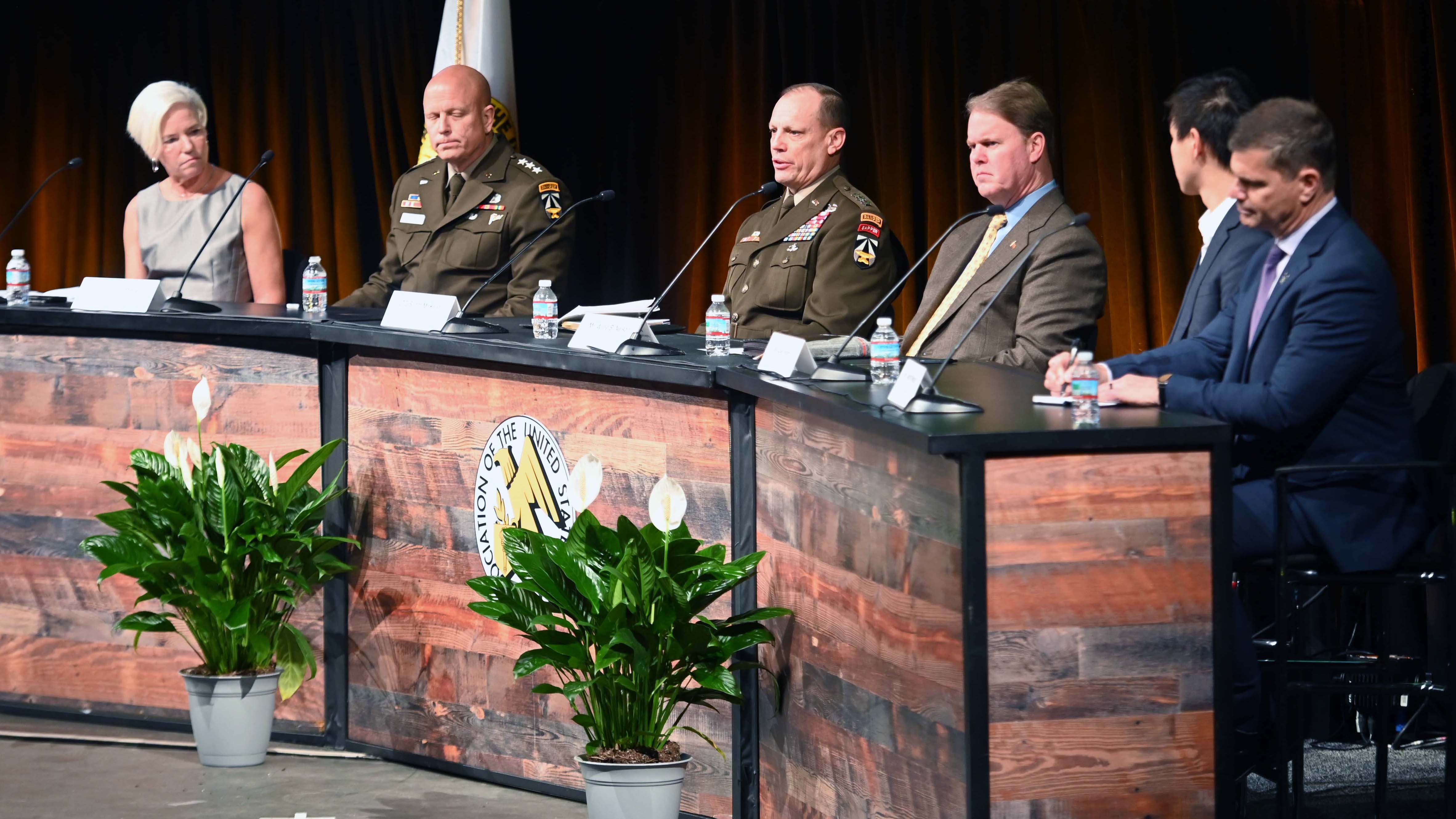Army of 2040 Still Requires Humans
Army of 2040 Still Requires Humans

While autonomous capabilities are expected to be ubiquitous in the Army of 2040, it is unlikely that entire formations will be replaced by autonomous systems, Army Futures Command leaders said.
“As we have been studying this and war-gaming this, we believe human-machine integration will be at the core of our formations as we move forward,” Lt. Gen. Scott McKean, director of Army Futures Command’s Futures and Concepts Center, said March 28 at the Global Force Symposium and Exposition hosted by the Association of the U.S. Army in Huntsville, Alabama.
“Will we have autonomous capability employed autonomously? I think the answer could be yes. It depends on what role and in what parts of the battlefield and for what purpose,” McKean said during a panel discussion on the myriad considerations the Army faces in designing a force for 2040.
Designing the Army of 2040 has been a “joint endeavor from the get-go” that has involved input from multinational partners and intelligence on the future environment, he said, adding that meeting the pacing threat will require balancing mass and precision.
“Over the last two decades, we’ve really been focused on precision as our capabilities that we’ve developed, and now as we look at our peer competitors out there, mass starts becoming more prevalent, so it’s not an either, or thing. It’s a spectrum,” McKean said.
Lt. Gen. Ross Coffman, deputy commander of Futures Command, noted that he envisions humans directing the machines to do what they are designed to do in battle, rather than machines acting completely on their own.
“Just like a working dog that has a human that gets that working dog to the location so that it can do what only that dog can do, I think we're going to see a flip in 2040, where humans are doing those functions that allow the machine to get into a position of relative advantage, not the machine getting humans into a position,” he said. ‘I don’t want the machine deciding what it does.”
The most likely use of artificial intelligence and autonomy on the battlefield will be in logistics, said Willie Nelson, deputy assistant secretary of the Army for research and technology. But, he cautioned, the Army needs to get into the field and test these systems before planning how they’ll be used.
“I think it’s a little premature to decide one or the other right this moment,” Nelson said, suggesting that the Army needs to get some of the known autonomous systems “out of the barn.”
“We need to really start getting some mud on the tires, both figuratively and literally, and really see where this is,” he said. “That’s where I think we need to focus our efforts right now. Pick those definable, winnable and solvable kinds of mission sets and let’s just go start flying and let’s go start driving and, again, we’ll learn.”

